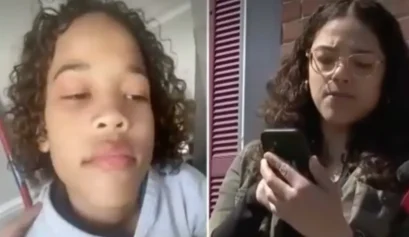
Photo courtesy of Getty Images.
American school kids are making a bold statement about the racial makeup of our nation’s school teachers — and it’s about time we listened.
According to a new study out of New York University, middle and high school students of diverse racial and ethnic backgrounds showed preference toward Black and Latino teachers over white ones. The report, based on data pulled from the Bill & Melinda Gates Foundation’s Measure of Effective Teaching study, comes amid concerns over the skewed ratio of predominately white teaching staffs in schools with majority-minority student populations.
“An overwhelmingly white teaching force is working with a majority non-white student population,” study author Hua-Yu Sebastian Cherng wrote. “This gap is long-standing and is not likely to be closed any time soon.”
Cherng noted that the issue particularly affects public schools in the inner-city. For instance, over 85 percent of New York City public school students are racial/ethnic minorities, yet just 40 percent of the teachers are non-white.
Per the study, researchers pored over 2009 and 2010 data, examining responses from over 50,000 sixth- to ninth-graders and 1,680 teachers. Students in the data set rated teachers using a five-point scale based on the so-called “7Cs” — Challenge, Classroom Management, Care, Confer, Captivate, Clarify and Consolidate. Each category measured teachers’ abilities to motivate students, understand their feelings and stimulate interest in the course material.
“This study provides empirical evidence that, at least from the student perspective, there is something really different going on,” said Cherng, who is also an assistant professor of international education at NYU, told the New York Daily News.
Because students were asked to evaluate specific teachers rather than their school’s teaching staff as a whole, Cherng was able to control for other factors that may have influenced their responses.
Overall, the study’s key findings suggest that Black and Latino students prefer teachers who look like them because Black and Latino educators better understand the challenges that come with being a minority. Previous research also suggests that a greater sense of connection between students and their teachers may actually result in improved academic performance.
That same student-teacher connection is also said to be linked to teacher perceptions and expectations of students.
When I look at my children I see myself,” said an African-American teacher identified as Valentine who was interviewed for the study. “… I also know that being smart has nothing to do with skin color.”
The study goes on to explore whether “race matching” students and teachers had any affect on grades. The results varied with some saying it boosted grades, while others said matching students with teachers who looked like them didn’t make much of a difference.
Black students did tend to be more fond of their Black teachers, however. Asian students also gave their African-American teachers high marks while Latino students had mixed responses.
So what can non-minority educators do to foster similar connections with their students?
“For white teachers, I strongly believe that if we study more what’s going on with minority teachers and how they develop relationships with all of their students,” Cherng said. “… We can train all teachers to do this.”


